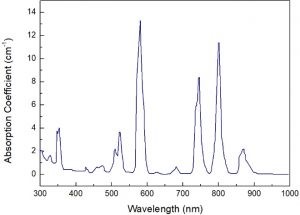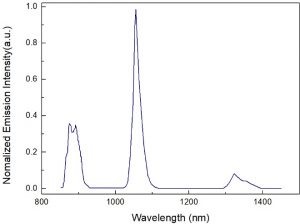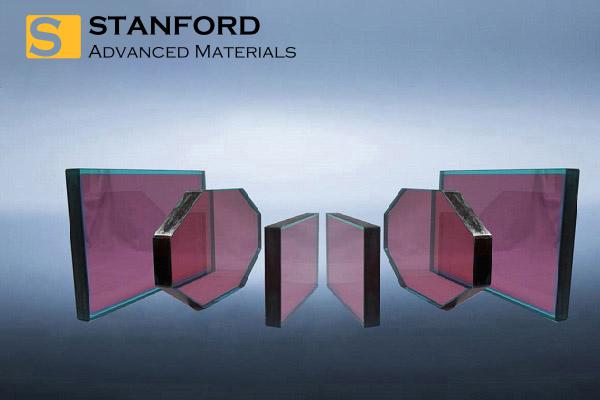N51 Nd Glass (Neodymium Glass) Description
N51 Neodymium-doped phosphate glass has the characteristics of high energy storage, large exciting emission cross-section, long fluorescence life, easy preparation of large size, and good optical uniformity. Therefore, it is widely used as an amplifier working material in high-power laser systems.
N51 Nd Glass (Neodymium Glass) Specifications
Material Specifications
|
Transition temperature (℃)
|
408
|
|
Softening temperature (℃)
|
448
|
|
Linear thermal expansion coefficient (10-7 / K) (30 ~ 100℃)
|
141
|
|
Linear thermal expansion coefficient (10-7 / K) (30 ~ 300℃)
|
160
|
|
Thermal coefficient of optical path length (10-6 / K) (50-100℃)
|
-1.9
|
|
Density g/cm3
|
2.7
|
|
Young's modulus (G Pa)
|
45.2
|
|
Poisson's ratio
|
0.26
|
|
Knoop hardness (kg/cm2)
|
302
|
|
Fracture toughness (MPa• m1/2)
|
0.66
|
|
Deliquescence coefficient (H2O 98℃) (mg/(cm2 / day))
|
2.2
|
Optical and spectral properties
|
Nonlinear refractive index coefficient N2
|
≤1.04
|
|
Refractive index (1053 nm)
|
1.505±0.003
|
|
Abbe number
|
68.2
|
|
dn / dt(10-6 /℃)(20〜100℃)
|
-9
|
Absorption and emission spectra


N51 Nd Glass (Neodymium Glass) Applications
- High power laser
- Waveguide amplifier
- Ultrashort pulse laser experimental equipment
N51 Nd Glass (Neodymium Glass) Packaging
Our N51 Nd Glass (Neodymium Glass) is carefully handled during storage and transportation to preserve the quality of our product in its original condition.
 Get a Quote
Get a Quote


